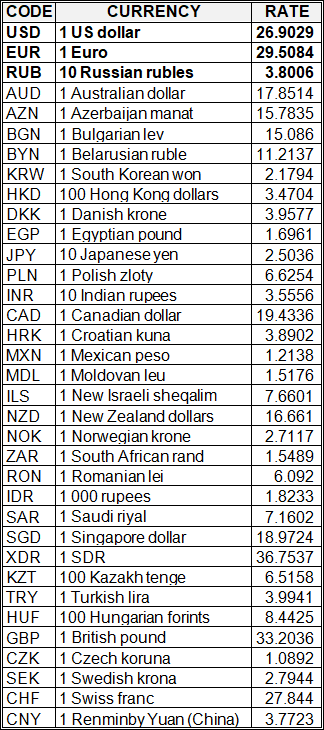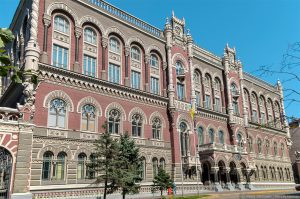
The COVID-19 pandemic pushes for cash to go to “normal Fintech,” in particular, the development of digital currencies of central banks, Economist and Professor at the Institute of Sciences Po Sergei Guriev has said. “The future is in the digital currencies of central banks. Central banks will gradually move away from cash, you will have Fintech in hryvnias… Everyone will have an account with the central bank,” he said during a public interview organized by the Kyiv School of Economics.
Guriev added that this trend is a challenge for commercial banks.
“You will have an electronic hryvnia. You will no longer have the cash hryvnia,” he said.
Previously, central banks argued that cash should be avoided by the need to combat the shadow economy, but in the current conditions, the pandemic pushes to it.
“Now it’s clear that this pandemic is not the last. And cash is a source of infection. Therefore, the transition to digital payments will accelerate. But it will not be bitcoin, it will be a normal Fintech,” the economist said.
National bank of Ukraine’s official rates as of 27/05/20
Source: National Bank of Ukraine

Smart Maritime Group (SMG) of Smart-Holding, combining Kherson and Mykolaiv shipyards, earlier planned in 2020 to increase revenue from sales of products by about 20% compared to 2019, to UAH 600 million from more than UAH 500 million, however, due to the deterioration of the situation production volumes may decrease.
According to Dmytro Krasnikov, the CEO of Smart Maritime Group, the key task was to develop an updated business development strategy in two main areas: maintaining and developing the company’s main profile – shipbuilding and ship repairs, as well as diversification of activities involving all the existing potential of our shipyards.
According to him, the company has expertise in the manufacture of large metal structures, its specialized unit previously participated in a number of projects for the development of road infrastructure in Ukraine, was involved in the manufacture of equipment for mining and processing plants. This is one of the promising areas. The development of the strategy is at the final stage, in the near future it will be submitted for approval to the management company Smart-Holding.
The company strengthens the team, expects the arrival of several top managers in sales and human resources.
Concerning the influence of coronavirus on the company’s work, its head pointed to a decrease in economic activity, there is a lack of liquidity in the market, many clients do not have funds to finance repairs and work. The volume of orders is declining, many contractors, especially from Europe, took a break. General uncertainty leads to the fact that investment projects are frozen.
Given this, SMG adopted a cost-cutting program if the situation drags on for a long time, although it is forecasted that by the third quarter the economic activity of all entities, including the company’s customers, will begin to recover.

The National Bank of Ukraine (NBU) has relaxed the harmonization procedures in the field of licensing banks, in particular, approaches to monitoring the financial condition of legal entities and the property status of individuals who are substantial owners of the bank, the regulator’s press service said on Tuesday.
The relevant changes were approved by NBU Board resolution No. 66 dated May 25, 2020 on approval of changes to the regulation on licensing banks, which was posted on the website of the central bank and comes into force on May 27, 2020.
According to the document, the National Bank has reduced the amount of information that the substantial owner of the bank must provide annually. In particular, from now until February 1, such individuals will have to submit a written assurance of the absence of grounds for the deterioration of their property status or signs of unsatisfactory financial condition, which must meet the requirements stipulated in the banks licensing regulations.
Thus, in 2020, substantial owners of banks will not submit documents stipulated in the regulation within their annual assessment of financial or property status, the NBU said.
According to the document, now, in order to recognize a satisfactory financial or property status, it is enough to have no signs of unsatisfactory financial condition for legal entities and to maintain solvency for individuals.
“The National Bank has also developed forms of documents for calculating the size of equity and analyzing the financial condition of a legal entity, conducted by an auditor or adviser. This approach will contribute to the implementation of common standards,” the central bank said.
The mentioned forms of documents will be posted on the NBU website.
In addition, the regulator clarified the coordination of bank leaders and informing about the opening of a separate division. “Innovations will help reduce technical procedures and carry out an in-depth analysis of processes,” the central bank said.
In addition, the National Bank updated the methodology for assessing the financial or property status of substantial owners, which, in the opinion of the regulator, will help improve the substantive analysis in the implementation of these procedures.
The NBU also clarified the procedure for coordination of bank managers and heads of internal audit units. So, the regulator will be able not to conduct testing of candidates, if during the year it already tested them for approval in equivalent positions in the same or another bank.
At the same time, if the candidate was refused approval for the position of the head of the bank or the head of the internal audit unit based on the results of the testing, re-appointment to the position in this or another bank is possible no earlier than six months later.
In addition, the National Bank clarified the procedure for informing the bank about the opening of a separate division and reduced the list of documents necessary for this. In particular, now banks need to submit only the economic justification for opening a separate division to the regulator. “This will help to reduce the workflow and speed up the process of registration of structural units,” the NBU said.

Employees of the National Police of Ukraine detained four foreign citizens in Odesa involved in the shooting in Kyiv on May 26, as a result of which a man was injured, the press service of the police said. According to law enforcement authorities, the victim turned out to be a citizen of Montenegro, who is placed on the international wanted list and is one of the leaders and organizer of the drug cartel, which supplies drugs in most European countries.
“The main version of the attempted murder was the criminal activity of the victim, a possible redistribution of spheres of influence in the organization itself, as well as between the Balkan criminal clans that control drug trafficking,” said Ihor Klymenko, the head of the National Police of Ukraine.